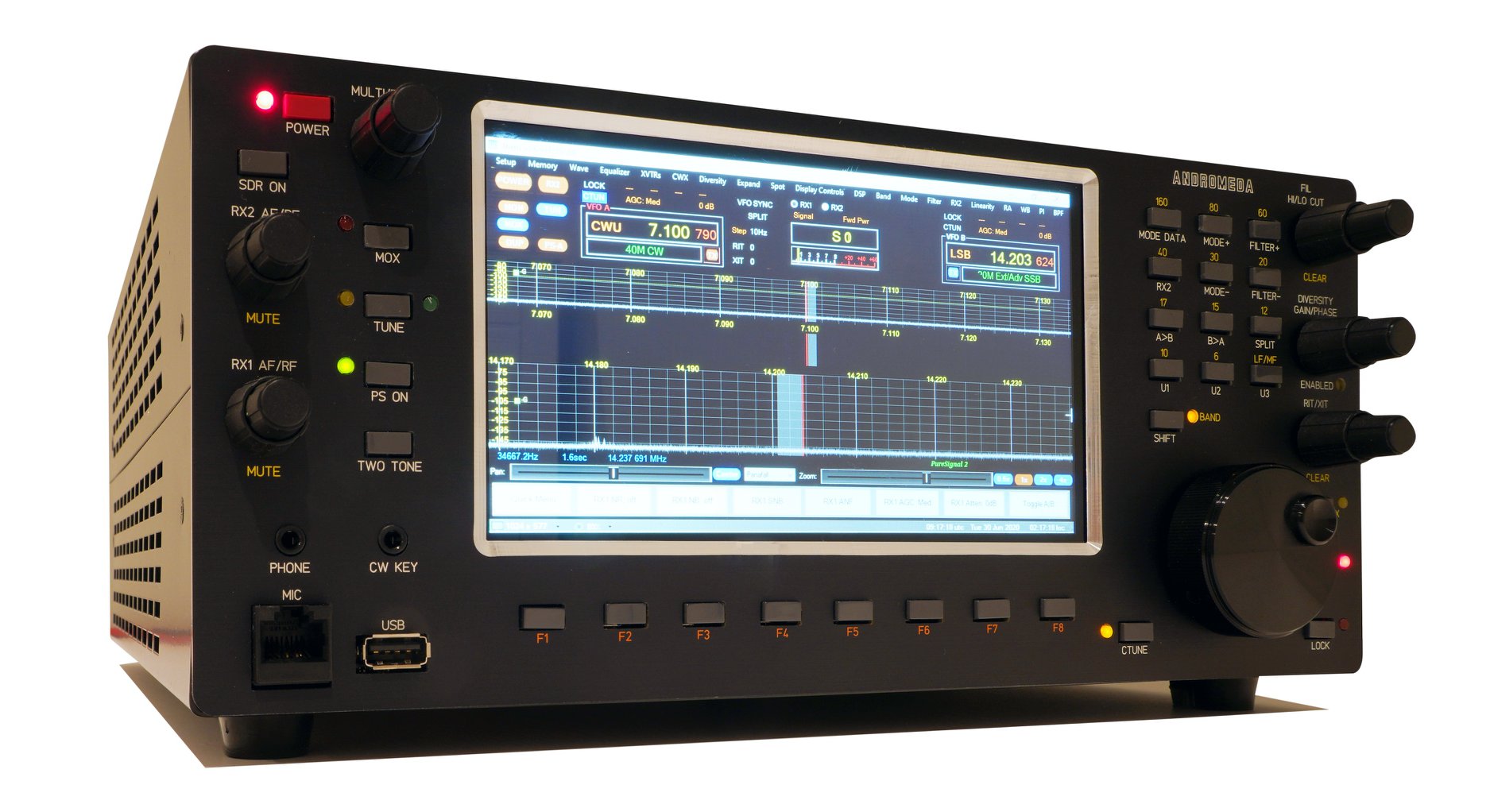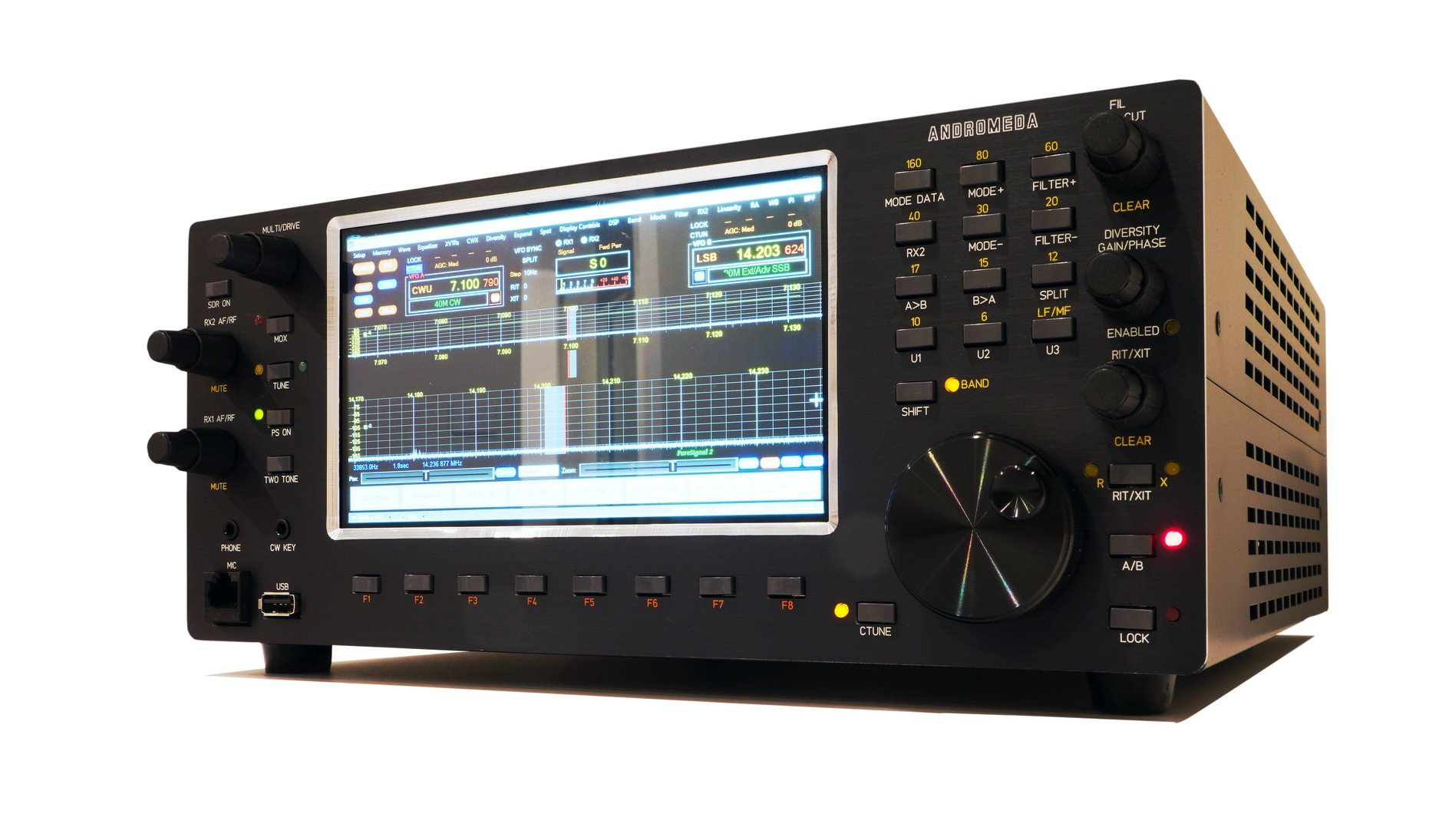Many thanks to Apache Labs who share the following announcement:
Sneak peek at the Andromeda 100W Transceiver……
10th GEN Intel 6 Core i7, 7 inch built in touch screen and an option to add up to two External HD Monitors.
Windows 10 Powerful PC and an Ultra High performance 100W SDR with PureSignal Goodness in a single compact Box!
Run FT8 and other Digital Modes out of the box!
Coming Soon!
We will post more information about the Andromeda transceiver when we have solid details.



You all complain like little spoiled brats
I have Flex 6400M I don’t own a computer it’s does not need a computer sold yaesu ftdz101d waste of money
Joe KL4QG
I pre ordered Andromeda
Windows 10 ? no thanks, that alone would make me look elsewhere. I hope Apache labs are reading these comments.
I want a Radio not a PC, think Kenwood TS-590SG, a real radio, great performance and pan adapter built in, add sdr if you want, or at least have all the buttons, make the radio look like a radio and perform like a radio and have a monitor out so someone can connect a display if they want.
I have a 7300 and FT-891 and the 891 is a much better radio, better filters, better receiver and much better audio. I use it much more than the 7300 for the better audio and quieter receiver.
After using the 590SG in a friends, I’m selling my 7300. It’s just not good enough, so much for SDR. Don’t get me wrong, SDR has it’s place but I wish it wasn’t forced on People this is why I think the TS-590 approach is best, proper radio with option to connect SDR.
waaaa,, nothing wrong with Windows 10 I’ve been using it since it first came out no problems at all can’t figure out why people have so many problems with it I guess they want to be a slave to Apple or something I don’t know
Wondows 10 is a godsend.
With all due respect, you have no idea about that to which you’re referring. “Proper radio with option to connect SDR.” You obviously don’t understand SDR; what you’re describing is like saying you can get a “proper bicycle with an option to connect to a supersonic jet fighter” (yes, you’re that far off base.) I have (or recently had) all the radios you mentioned. None compete with the Andromeda. The NR2 alone can’t be described, it must be experienced! The internal EQ is so good that those tuning through the bad stop and ask what “Outboard EQ” I’m running. The Downward Expander removes ALL background noise (my noisy shack has a window AC Unit 2 feet from my operating area, an old Alpha 76 with a loud fan, etc. – but all that can be heard is my voice.) The list of differences go on and on. But the review below will educate you on the ANAN series SDRs. I love Kenwoods, I’ve had virtually all of them. But to even compare any Kenwood to any Apache Labs SDR is not just Apples to Oranges – its Apples to Garlic.
https://m.youtube.com/watch?v=KR5t4Hei9FA
The Flexradio 6400 is only $1999.00 new. Yes you need a computer, but it’s the best SDR out there.
No it is not, it doesn’t have the Puresignal Technology the Apache Lab units have!
For years we have had a quite cheap and versatile processing standard: The Raspeberry Pi form factor. If I were responsible at a TRX developer I would include this form factor into my design and add a shield to it.
This way the user can easily update the computer core every few years. The TRX manufacturer might wish to create a new shield from time to time. Besides that all the manufacturer had to do would be a new cover plate when a new Raspi gets a new layout for the USB/Network connectors.
This would also introduce Linux with all its open source software.
> “For years we have had a quite cheap and versatile processing standard: The Raspeberry Pi form factor.”
Years, maybe – but not very long. For many more years before that (and still current now!), there was a relatively cheap and versatile processing standard: the PC/104 form factor. While form factors don’t last forever, PC/104 is fairly well-thought-out and probably has several orders of magnitude more installed systems out there (meaning it’s unlikely to be ditched in the immediate future, and if it is it’ll be long time happening). It also has more potential expansion capacity (particularly in its later incarnations)
The RPi, on the other hand, is severely hampered in expandability and, while it has a large hobby adoption, isn’t a particularly well-thought out form factor – and, just from the limitations it’s hitting right now, will probably see a major physical redesign in the foreseeable future.
> “This would also introduce Linux with all its open source software.”
The RPi might run Linux – but it’s not very open source. The hardware design itself, the firmware it needs to boot, the many binary blob drivers it needs to access the hardware – all are closed source. Funnily enough, PC/104 boards are often more ‘open source’ in both hardware & firmware than the RPi…
(To be clear – I’m *not* advocating for PC/104 at all. Just to point out that popularity of form factor alone is not a particularly good reason to choose something, and that if you’re really concerned about “open source” then you should probably be advocating for something that’s actually Open Source…)
Apart from that, the idea of trusting the lifespan of a rather expensive (and, you’d hope, long-lived) piece of equipment to the longevity of Win10 is … crazy. I mean, why not choose something like QNX, VxWorks, FreeRTOS, or similar – or, yes, even one of the embedded Linuxes – something that’s designed to work forever without being touched, rather than one that rots from the inside out? You’ve only got to look around at all the relatively-recent but now abandoned test gear that ran Win2k, XP, or WinCE to see what a good idea that’s not…
Too rich for my blood. I refuse to make down payments for a hobby. Also best to wait till all the bugs are worked out. Wait a year before buying a new rig.
The price is equal to the base Elecraft K4 (~$4500). The choice of OS is awful. Until now the Anan range were above that of the Flex too. Now that has to be questioned. There’s a very active market of used K3(S)es. If only the receiver audio was any good. Can’t stand it compared to Kenwood audio (with cans on, on CW).
I was interested until I saw “Windows 10.” A clear dealbreaker right there.
Agreed
Exactly, Windows 10 is certainly a showstopper.
Well, Flex also uses Win10 on the Maestro and the 6000M models. No one crying there. Same thing..
ZZ…..
“no one is crying there” . Are you kidding us? Obviously you have not been staying abreast of all the ‘issues’ concerning Flex products. Check out some of the Flex ‘communities’.
W4TMW
That “Windows 10” line makes me wonder what will happen to such a rig when some windows update decided to screw the OS or when the “Windows 10” OS will become obsolete and not supported anymore; considering that the rig won’t probably be cheap, people suddenly finding that they have a costly doorstopper isn’t going to make it sell so well
I agree. Windows 10 is a showstopper for me not only due updates, but also for forgetting its setup. Maybe the user will be fine until first connection to a internet..
But it has Intel processor, so there is also MINIX3 🙂 Window 10, really do not understand this… :(((
Does the EULA ship separately?